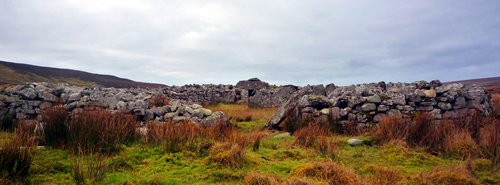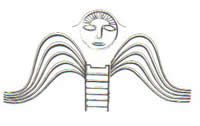Archeology

Maps are available in the Craft Shop of Archaeological information and
sites in the area.
There is also a Archaeology Summer School - 5000
years in Stone
run through Oideas Gael Glencolmcille.
Field trips are organised to the numerous pre & early Christian monuments
of the region as well as lectures by scholars in early Irish literature,
history, art, archaeology & folklore. 
"The
Living Stone"
James McDyer, P.P.
St Columba's Day, 9th June 1971 In its magnificent ancient monuments Glencolumbkille has something special
to offer. For here within the range of three miles you can span 5000
years of time.
Rarely has the uncouth hand been raised to deface the monuments here.
Never has the march of progress been allowed to brush them irreverently
aside. Unmolested, except by the ravages of weather and time, they have
dozed forever on bleak hillside or quiet dell.
Yet the monuments have not remained aloof, unrelated to the people of
the glen. They are part of a living tradition, and the well-trodden paths
around many a cairn or standing stone are silent testimony that here
the present has always met the past. In this, Glencolumbkille is perhaps
unique.
Imagine the first farming settlers as they disembarked in what was then
a sunny and fertile land. Observe the transformation 2000 years later,
as the climate changed and the land was engulfed by bog. Hear, in fancy,
the sound of St Columba's bell - bringing the hope of Christianity to
what had become a remote and depressing place. Contrast the peace of
monastic settlements with the troubles of later centuries.
Then, with fresh eyes, look at Glencolumbkille - a Glencolumbkille that
has slowly fought its way upwards and come to terms with its environment.
The houses high on the hill with their carved out farms and the factories
hidden discreetly in the valley are an index of that hard work.
The wheel has come full circle. The first settlers came, in all probability,
to escape the tensions of tribal life and war. Today Glencolumbkille
again smiles on the visitor who comes to escape, if only for a while,
the new tensions of industrial life.


|

